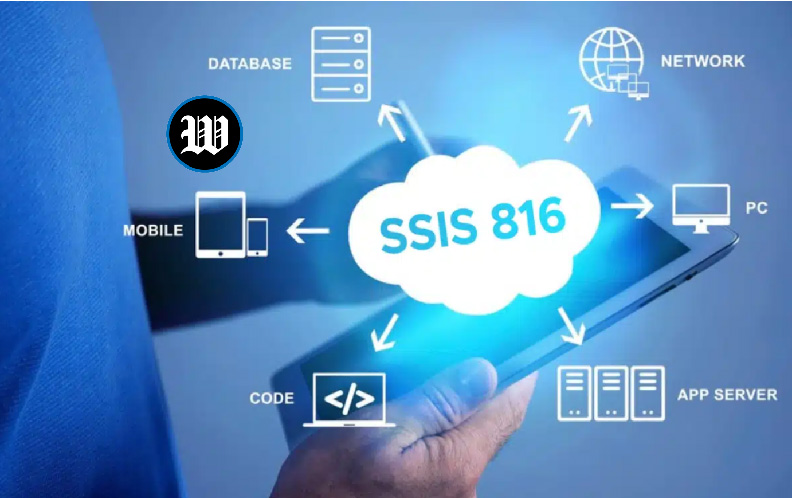Data integration is a critical aspect of modern business operations, allowing organizations to consolidate, manage, and analyze vast amounts of data from various sources. One of the most powerful tools for this purpose is SQL Server Integration Services (SSIS). Among the many versions of SSIS, the SSIS-816 stands out for its robust features and capabilities. In this article, we will explore the key aspects of SSIS 816, its benefits, and how it can enhance your data integration processes.
Understanding SSIS-816
SSIS-816 is an advanced version of SQL Server Integration Services, a platform for building enterprise-level data integration and data transformation solutions. It provides a comprehensive suite of tools and utilities to facilitate data extraction, transformation, and loading (ETL) processes. SSIS 816 is designed to handle complex data integration tasks with high efficiency and reliability. Its enhanced features and improved performance make it a preferred choice for organizations aiming to streamline their data workflows.
Key Features of SSIS-816
SSIS-816 boasts several features that set it apart from its predecessors and competitors. One of the most notable features is its intuitive graphical interface, which simplifies the creation and management of ETL processes. This interface allows users to design data flows using drag-and-drop functionality, making it accessible even to those with limited coding experience. Additionally, SSIS 816 includes a wide range of built-in connectors and adapters, enabling seamless integration with various data sources, including databases, flat files, and cloud services.
Another significant feature of SSIS-816 is its scalability. It can efficiently handle large volumes of data, ensuring that integration processes remain fast and reliable, even as data volumes grow. This scalability is crucial for organizations dealing with big data and complex data environments. Furthermore, SSIS-816 offers robust error handling and logging capabilities, allowing users to monitor and troubleshoot ETL processes effectively. This ensures data integrity and minimizes the risk of data loss or corruption.
Benefits of Using SSIS-816
The use of SSIS-816 offers numerous benefits to organizations. One of the primary advantages is improved data quality. SSIS 816 includes powerful data cleansing and validation tools that help ensure the accuracy and consistency of integrated data. This is particularly important for organizations that rely on data-driven decision-making, as high-quality data leads to better insights and outcomes.
Another benefit of SSIS-816 is its ability to automate repetitive data integration tasks. By automating ETL processes, organizations can save significant time and resources, allowing their IT teams to focus on more strategic initiatives. Automation also reduces the likelihood of human error, further enhancing data quality and reliability.
SSIS 816 also supports real-time data integration, enabling organizations to make timely decisions based on the most current information. This is especially valuable in industries where real-time data is critical, such as finance, healthcare, and e-commerce. Additionally, the platform’s robust security features ensure that sensitive data is protected throughout the integration process, meeting compliance requirements and safeguarding against data breaches.
Implementing SSIS-816 in Your Organization
Implementing SSIS 816 in an organization requires careful planning and execution. The first step is to assess your organization’s data integration needs and identify the specific use cases where SSIS-816 can add value. This involves understanding the data sources, data volumes, and integration requirements unique to your business.
Once the assessment is complete, the next step is to design the ETL processes using SSIS-816’s graphical interface. This involves mapping out the data flows, defining transformation rules, and setting up error handling mechanisms. It is essential to involve key stakeholders in this process to ensure that the ETL design aligns with business goals and requirements.
After designing the ETL processes, the implementation phase involves configuring the necessary connections, adapters, and data flows within SSIS-816. This may require collaboration with database administrators, IT staff, and other technical personnel to ensure that all components are correctly set up and integrated. Testing is a critical part of this phase, as it helps identify and resolve any issues before the system goes live.
Maximizing the Value of SSIS 816
To maximize the value of SSIS 816, organizations should continuously monitor and optimize their ETL processes. This involves regularly reviewing performance metrics, error logs, and data quality reports to identify areas for improvement. SSIS 816 provides several tools and utilities for monitoring ETL performance, allowing organizations to make data-driven decisions about process optimization.
Investing in training and development for IT staff is another important factor in maximizing the value of SSIS-816. Providing team members with the necessary skills and knowledge to effectively use the platform can lead to more efficient and effective data integration processes. This can be achieved through formal training programs, online courses, and hands-on workshops.
Net Worth of SSIS-816 in the Market
Understanding the market value and impact of SSIS 816 is crucial for organizations considering its adoption. SSIS-816 is part of Microsoft’s broader SQL Server ecosystem, which has a significant presence in the enterprise software market. The SQL Server suite, including SSIS-816, contributes substantially to Microsoft’s revenue, reflecting its importance and demand in the industry.
The net worth of SSIS-816 can be measured not only in financial terms but also in the value it provides to organizations. By enabling efficient and reliable data integration, SSIS 816 helps businesses achieve better data insights, improve decision-making, and gain a competitive edge. This value translates into tangible benefits such as increased productivity, cost savings, and enhanced business performance.
Conclusion
SSIS-816 is a powerful and versatile data integration platform that offers numerous benefits to organizations. Its intuitive interface, scalability, automation capabilities, and robust security features make it an ideal choice for businesses looking to streamline their data integration processes. By implementing SSIS-816 and continuously optimizing its use, organizations can achieve high-quality data integration, improve decision-making, and drive business success. Understanding the market value of SSIS-816 further highlights its significance and impact in the industry, making it a valuable asset for any organization.


